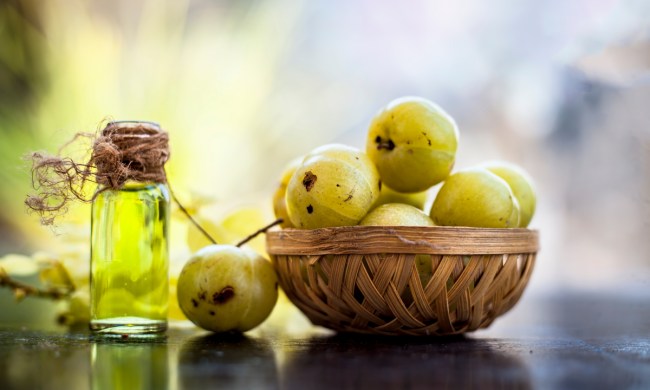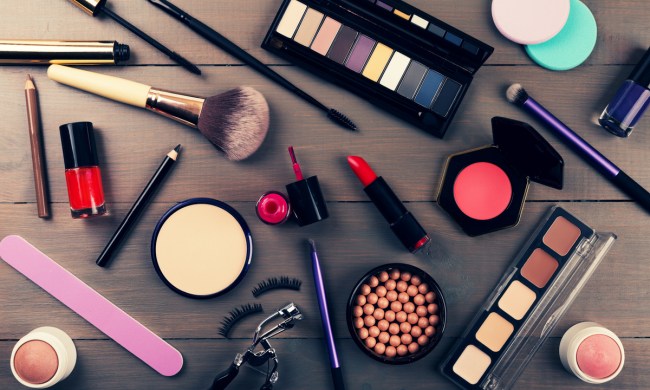Waking up is hard enough already, and bedhead only makes things more difficult. As restorative as sleep is for our minds and body, sleeping without hair protection can lead to a frizzy, tangled, or limp mane. It can also lead to breakage, which is a nightmare for long locks and pixie cuts alike. Whipping it back into shape adds time and stress to your morning routine. Who needs that?
Wrapping hair in a scarf overnight can help alleviate many bed head woes. Though Melissa LaPerriere, founder of Salon Nové, says hair wrapping is coming back in style, some of her clients still consider it to be an old-school solution.
“We think about the 1950s, and that sort of thing,” LaPerriere says, but it’s a benefit to modern women too, regardless of hair type, texture, volume, or length. Read on as LaPerriere breaks down the benefits of hair wrapping and how to best wrap your hair for overnight protection.
Reduces dryness
LaPerriere lives in Colorado where the air is exceptionally dry, which can wreak havoc on hair even when indoors at night. It can be quite impossible to achieve that all-natural hair shine in the midst of conditions such as these. While you need to be more cognizant of your hair’s moisture in a dry climate, poor nighttime hair care can dry out your locks in the most humid climates. Cotton pillowcases, which many people use, certainly don’t help.
“Overnight as we sleep, our scalp produces oils that are very important to the hair,” she says. “Those cotton pillowcases make the ends drier.” Cotton absorbs this helpful moisture, whereas covering your hair with a silk wrap provides a protective layer, holding the moisture in.
Keeps style in place
Just as we might be recycling outfits a little more these days, we are also getting more mileage out of our hairdos. If your hair is especially time-consuming to style, save time by wrapping your hair to keep things in place.
Protects against breakage
Coloring or treating your hair gives great versatility, allowing you to rock a curly, pin-straight, or mohawked ‘do. The downside? The chemicals make your hair more susceptible to breakage. A silk or satin wrap can reduce friction with pillowcases and banish breakage, leaving your hair looking fuller and healthier.
Fights tangles
People with longer hair in particular know just how pesky and painful tangles can be. Dealing with them can literally feel like you are pulling your hair out, which is obviously harmful to your locks.
LaPerriere suggests braiding hair and wrapping it to reduce the knots that build up in our hair as we toss and turn throughout the night. “It can make life so much easier,” she says.
Nighttime ritual
The conversations around self-care increased in 2020 amid the COVID-19 pandemic, as we took notice of the benefits of a little pampering. Having a short ritual like wrapping your hair that makes you look and feel better can be a way to show yourself a little extra, well-deserved love.
“How can we do those little things?” LaPerriere comments. “It’s a self-care ritual that can help nourish our hair back to life.”
How to wrap hair in a scarf
This all sounds great, but you may be wondering, what is the best way to protect your head while you sleep. There are a handful of simple wraps to try as you discover what works best for your hair and lifestyle.
First, LaPerriere recommends a silk or satin scarf, noting that satin is her go-to because it’s eco-friendlier. These fabrics are also smoother and less prone to friction than their cotton and polyester counterparts. She typically works pomegranate oil into her hair for its replenishing benefits before wrapping it in a scarf.
“You may want to choose a wrap that sits more on top of the head or down by the nape,” she says. “That is a personal preference, and it’s a little trial-and-error. Find that routine that feels really good for your sleep habits.”
The best wraps to purchase
Though they are not as eco-friendly as satin, silk wraps are popular for good reason. Silk prevents breakage and can control frizz and flyaways (that often occur as a result of under-hydration). Additionally, silk doesn’t absorb moisture, so all the hydration stays in your hair and not on the pillowcase. The material is gentle on your hair and isn’t bulky or uncomfortable to sleep in. Your hairstyle, length, and texture will determine what type of silk wrap is best for you, whether it’s a scarf, wrap, or bonnet.
High-quality satin or plastic shower caps are an excellent investment for low-maintenance hair care. If you don’t plan to wash your hair in the shower, wrap it up in a reusable shower cap and keep it protected throughout your whole routine, whether it’s getting ready for the day or powering down at the end.
While silk caps work to keep moisture in, waterproof satin or polyester caps keep moisture and other dirt out. They are especially great for the summer when the humidity is high. Protecting your hair from this excess moisture in the air is great for maintaining your blowout or other freshly styled ‘do.
Whatever your reasons, an overnight hair cover is worth the investment. If you want to see how much healthier and happier your hair can be, and how much easier it can be to style, spend few nights with your hair wrapped to see the results for yourself. Give yourself and your hair a break from heat styling and treat yourself and your hair. You both deserve it.




